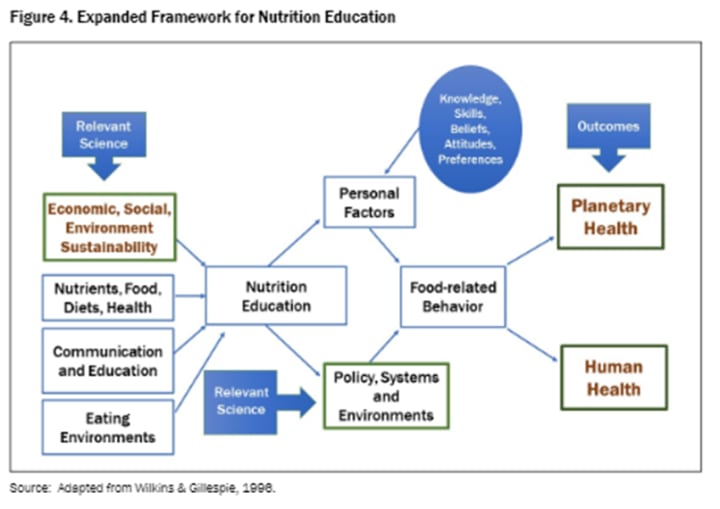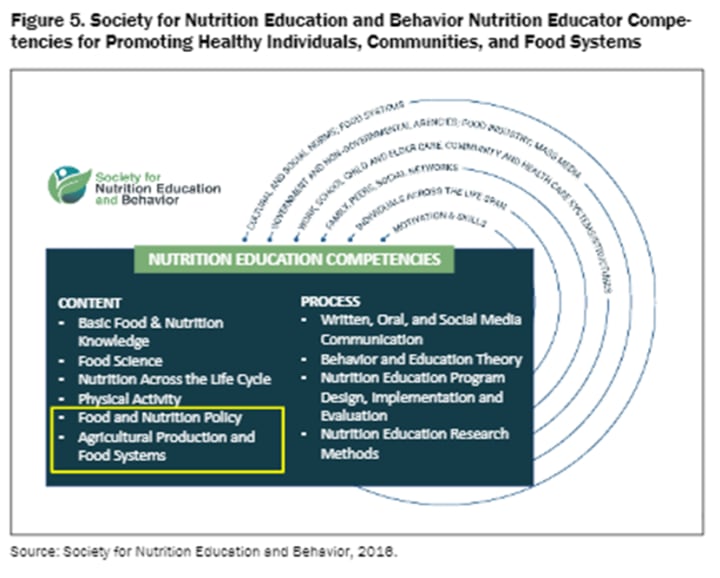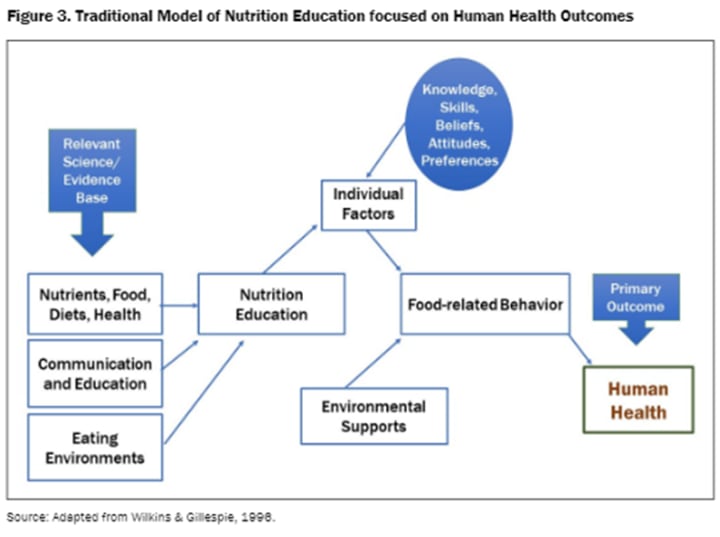Anthropology Review on Healthy Life
Healthy Life: Why Human Variation Depends on What We Eat

Nutrition in society has always been an important factor for the development of future generations. The implementations of new nutritional education have helped to improve and expand our knowledge on healthy food programs. The nutritional factors could be geographical, ethnographic, economical, and even sociocultural. How nutrition helps improve human variation? Food sources and nutritional factors will improve the development of kids and teenagers. To maintain an adult in top notch health is necessary to have a balanced diet. Diets also depend in factors as allergens, nutritional gain, seasonal production, and planetary health. Nutrition education is highly relevant, and it has evolved with us. In the traditional model of nutritional education, the economical, social, and environmental sustainability was not taked in count. The expansion of planetary health and human health has evolved with the food-related behavior. Now, we care about how the food we eat affects our planet and environment. The phrase “we are what we eat” suddenly is becoming more relevant and humanitarian. Through time, homo sapiens has feed in different species and developed the art and science of the cuisine.
My future project focuses in how relevant the nutrition in Canadian society has evolve and how well balanced is a “common” diet. Not everyone follows a specific diet, and the healthiness of an individual will variety depending on genetics, background, education, allergens, and location (City, and a rural area). Another factor is the planetary health, many individuals advocate for the protection of the planet. Vegans, or even selective consumer have the idea of protecting the environment by choosing what they consume. The ideology of certain individuals can make a huge difference in society since the existence of social media, which boost the reach of massive ideologies. All the previously mentioned can be used to have a better understanding on nutrition from now compare with twenty years ago.
Another interesting research in the nutrition intervention, which is the structural violence and industrialization of agri-food systems. Marisa Wilson and Amy McLennan stated how public health intervention of relocating food. The system fails because of the lack of attention to global history of industrial food and agriculture. The structural violence occurs in any situation in which some people are unable to achieve their capacities or capabilities to their full potential (Marisa Wilson & Amy McLennan, 1.2). This means that the lack of food causes violence which also influence the production of food. The endless circle keeps growing affecting several areas in the Caribbean and the Pacific. The history says that lack of food causes always problems, and that has not change with time. Wilson and McLennan give multiple difference between islands and the mainland. The susceptibility of non-communicable diseases. Diabetes, obesity, cardiovascular diseases, malnutrition, and some types of cancer.
Biocultural determinants of overweight can vary but one of the major causes of obesity is malnutrition. Cohen, Emmanuel, et al. research about obesity in Senegal is an interesting study how obesity has become a global pandemic. Low- and middle-income countries are now facing a faster transition than high-income countries, caused by high urbanization rates that involve rapid short-term adaptive strategies that are potentially obesogenic (Cohen, et al. 470). The focus in biocultural determinants of obesity as body weight, physical activity, and diet practices. These factors make this study impressive because of the control group they used during the study.
Healthy product availability by Bailey Hounghtaling et al. shows how low-income households purchase food and beverages trying to improve the diet behaviors on customers. However, SNAP shoppers have limited dietary purchasing restrictions and approaches are required to improve their choice behaviors to align more closely with the Dietary Guidelines for Americans (DGA), 2015−2020 (Bailey Hounghtaling et al. 171). Normally, the most affordable food is not necessarily the healthiest of all. This study shows the availability of healthy food and the consumer behaviors highly influence the unhealthy food on different individuals. The price on junk food sometimes can be way cheaper than a healthy meal. This study focuses on the change of consumer consumption by following the guidelines of the GDA. This will also affect how the economic system prioritize monetary gains over healthy behaviors of the residents of globalized countries.
Pandemic health issues is another interesting study, since the pandemic of Covid-19 started must of us have change or habits. Marco Gianneschi and Finanza Futura Shi thought about how the food industry has been affected by the pandemic phenomenon. They examined the society and how deeply our identity with the food has change. Social gatherings, food consumption, and security of consumption. In their paper is mention “We cannot rely on experience: the disruption that COVID-19 and the necessary containment measures have caused is without precedent in human history. What hypotheses can we formulate regarding the influence of the pandemic phenomenon on the future of food?” which realistically speaking is true (Marco Gianneschi & Finanza Futura Shi, 158). Food contamination with Covid -19 is completely out of question but what about the future? Some pandemics will be more aggressive and harder to control that the one we suffer right now. Food is necessary, so we need to look for security, identity, and a social mirror that understands the limitation of all this previously mentioned.
Methodology
In order to examine the actual and colonial (this is an example, it can be a more recent or older period) nutrition system of the Canadian Region, I recommend using a well-adjusted set of question to multiple individuals including: age, sex, gender, nationality, culture or cultures, religious practices, ideologies, common diet, and medical history (allergens and medical diet). This will help to have a better understanding in how different individuals choose their own meals. All these questions will be prepared before hand and agreement with the participants of this research.
To examine any colonial, or older age diet. I recommend the use of dentofacial system and morpho-physiological of skulls since different proteins can reveal the common nutrition for different individuals. Government permit will be necessary for this kind of project will be necessary. The approval of family individual if some relatives are part of the study.
Results
The results of the study that can be predict are highly dependable in the next two figures. Figure 3 will help to understand how nutrition education works in a traditional level. Figure 4 goes beyond the traditional understanding of nutritional education. Figure 4 includes the understanding of economy, social environment, and sustainability that factors into planetary health and human health. Figure 5 includes what we need to understand nutrition education competence. Promoting a good nutrition is hard because not anyone have the same options for a good diet.


The implementation of socio economic factors, environment, and sustainability of food sources will improve the knowledge about what people eat and why. The results will clearly vary but the positive feedback about nutrition evolution will help people to understand the value of food. I personally think that most people consume anything as long enjoyable and well made.
I recommend the introduction of prenatal supplements can add later into the project since, I think most mothers have different diets. The understanding of the difference in diets is essential during this study, since not everyone will eat the same.
The results I expect to happen is at least a larger percentage of people with eating disorders due to media, social movements (body acceptance), low-income, environment, and negligence. While the others will be divided in healthy habits due to medical needs, body enhancement (bodybuilding, etc.), precaution, and ignorance of eating healthy (some people eat healthy just because they like this food).
Personally, I think that healthy habits will be in a long-term become part of the results for this study, since we can start promoting a better diet and nutrition. Health programs are not everywhere as fast food, and unhealthy ways of living. This study can be a way to communicate the message of a healthy behavior, not just for the food industry, but also for the consumers.

Conclusion
Human variation is also dependable on what we eat. The consumption of different diets, good ones and bad ones, help to improve our growing, functioning, development, and evolution. Diets have change time to time, and humans have developed a science and art behind food. Nutritional education depends on economic, social, environment sustainability, nutrients, food, diets, health, education, and the eating environment. We now know that multiple ideologies also influence our nutrition knowledge. We pick food also if it helps the planet, if it saves the turtles, or other cute animal on the planet.
References
Bethard, J. D., Berger, J. M., Maiers, J., & Ross, A. H. (2019). Bone Mineral Density Adult Age Estimation in Forensic Anthropology: A Test of the DXAGE Application. Journal of Forensic Sciences, 64(4), 1125–1128. https://doi.org/10.1111/1556-4029.13987
Cohen, E., Gradidge, P. J.-L., Ndao, A., Duboz, P., Macia, E., Gueye, L., Boëtsch, G., Pasquet, P., Holdsworth, M., & Chapuis-Lucciani, N. (2019). Biocultural determinants of overweight and obesity in the context of nutrition transition in Senegal: a holistic anthropological approach. Journal of Biosocial Science, 51(4), 469–490. https://doi.org/10.1017/S0021932018000287
Houghtaling, B., Serrano, E., Dobson, L., Kraak, V. I., Harden, S. M., Davis, G. C., & Misyak, S. (2020). Perceptions of Rural SNAP-Authorized Food Store Owners and Managers About Healthy Product Availability. Journal of Nutrition Education & Behavior, 52(2), 171–179. https://doi.org/10.1016/j.jneb.2019.09.023
Marco Ginanneschi. (2020). The Future of Food after Covid-19 through the Lens of Anthropology. Journal of Agriculture, Food Systems, and Community Development, 9(4). https://doi.org/10.5304/jafscd.2020.094.027
Jennifer Wilkins. (2020). Nutrition Education in the Anthropocene. Journal of Agriculture, Food Systems, and Community Development, 9(3). https://doi.org/10.5304/jafscd.2020.093.026
Krylasova, N. B., Brykhova, N. G., & Burova, N. D. (2016). The Role of Nutrition in the Biological Adaptation of the Medieval Population of the Cis-Ural Perm Region (Archeological and Anthropological Evidence). International Journal of Environmental and Science Education, 11(11), 4812–4824.
Reiches, M. W. (2019). A life history approach to prenatal supplementation: Building a bridge from biological anthropology to public health and nutrition. AMERICAN JOURNAL OF HUMAN BIOLOGY, 31(6). https://doi.org/10.1002/ajhb.23318
Wilson, M., & McLennan, A. (2019). A comparative ethnography of nutrition interventions: Structural violence and the industrialisation of agrifood systems in the Caribbean and the Pacific. Social Science & Medicine, 228, 172–180. https://doi.org/10.1016/j.socscimed.2019.03.029
About the Creator
Dain Hesuni
I Like writing a lot. I prefer to go for gore, horror and right now trying to get better in fantasy.
Enjoyed the story? Support the Creator.
Subscribe for free to receive all their stories in your feed. You could also pledge your support or give them a one-off tip, letting them know you appreciate their work.






Comments
There are no comments for this story
Be the first to respond and start the conversation.